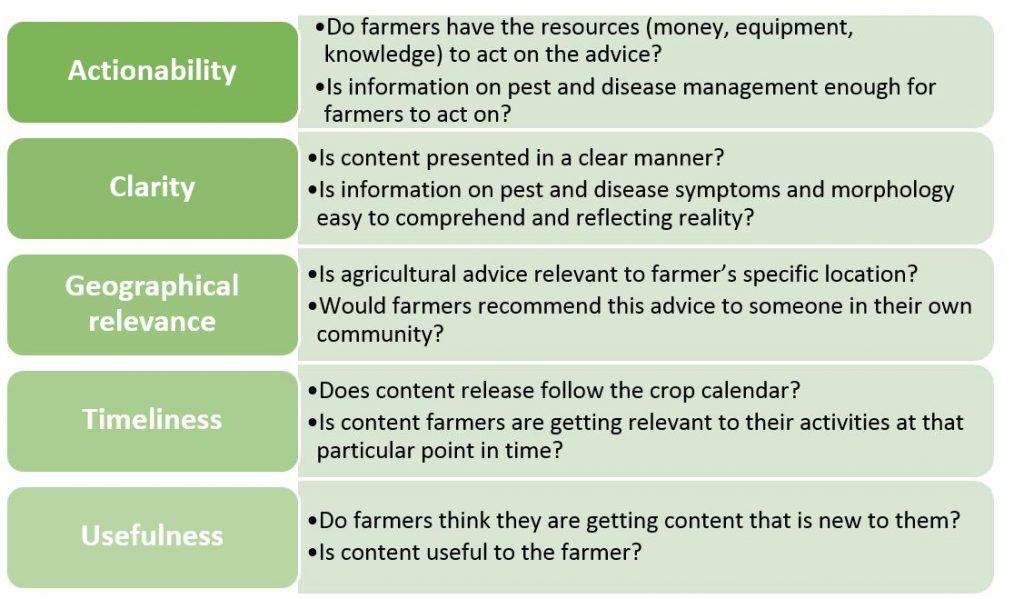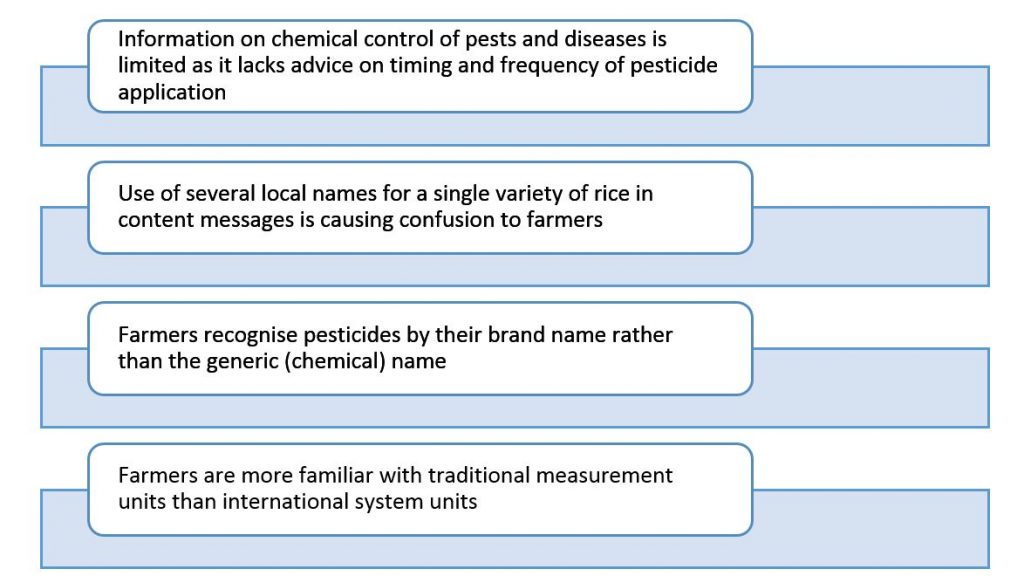What comes to mind when you think of agricultural content quality, I ask you. For me, the answer is simple but complex at the same time. Simple because it always distils down to the five qualities of actionability, clarity, geographical relevance, timeliness and usefulness that make up the backbone of any agricultural content-related discussion I have engaged in with other mAgri aficionados.
Complex at the same time, however, as it opens Pandora’s Box leading to all sorts of questions about how to define those qualities, what tools and methodologies should one use to determine if content is of high quality, who is best placed to play the roles of feedback giver and receiver and so on.
Over the last two years, our mAgri team has supported six Mobile Network Operators (MNOs), two in Sub-Saharan Africa and four in South Asia, in launching and scaling agricultural Value Added Services (Agri VAS) and promoted knowledge sharing with the industry through a series of relevant publications. In an effort to strengthen the capacities of the MNO partners and assist with the creation of a knowledge base that revolves around agricultural content, we have developed an activity prototype that goes by the name of ‘Content Testing’ and involves guidelines on assessing the quality of content and a sample interview agenda. The activity is modelled using user-centred design principles which are widely used to bridge the potential disconnect between office-based, Agri VAS gurus and smallholders.
‘Content Testing’ is made up of five exercises, each one of which aims to define a quality principle of agricultural content through a series of questions directed to farmers:

Figure 1 – Asking questions to define content quality
To run the exercises, an agri VAS team is encouraged to schedule one-to-one interviews and focus group sessions comprising not more than five farmers. Farmers need to have experience in growing the crop whose content is being tested rather than farmers who are looking to cultivate the crop for the first time in the future. So, if testing the quality of maize content, actual maize farmers ought to be recruited. Additionally, ‘Content Testing’ should run in multiple locations that reflect the variety of agro-climatic conditions and farming practices employed in the cultivation of the crop.
Alongside a moderator, the participation of a minimum of two note takers is required. It is essential note takers understand local culture and ethics and drive the activity without disruptions. Their role is fundamental in ensuring that all relevant insights are meticulously captured besides non-linguistic modes of communication such as gestures and facial expressions, voice pitch, group dynamics and so on. Note takers need to be ready to assist the moderator when needed.
‘Content Testing’ has already run in Ghana, Myanmar, Pakistan and Sri Lanka and resulted in rich insights that fed back to the in-country content development cycle.

Figure 2 – Examples of ‘Content Testing’ insights gathered by an agri VAS team
Our MNO partners in all of these four markets have experienced practical benefits from running ‘Content Testing’ in their countries and are considering making the activity an integral party of the product iteration cycle. So, if you are still undecided on the benefits of running ‘Content Testing’, give farmers the chance to decide for you! For a full version of our ‘Content Testing’ guidelines and interview agenda please download them below and share your stories with us about how content quality testing works for you by emailing as at [email protected].
Download the guidelines


